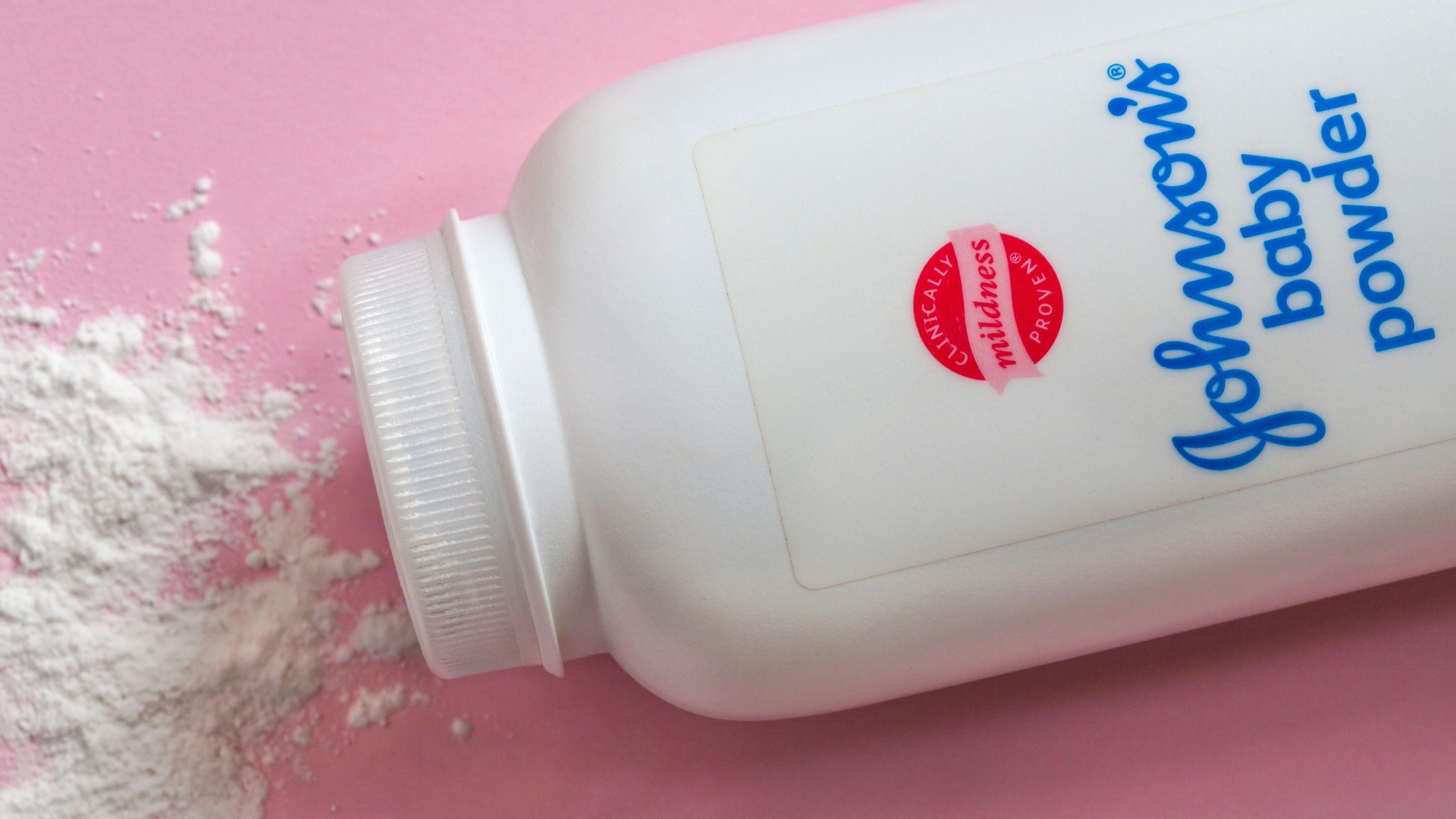Baby powders are cosmetic or hygiene powders composed of substances such as:
- the clay mineral talc
- cornstarch
- arrowroot or other starch-based powders
These preparations are frequently applied to prevent or treat diaper rash on infants’ bottoms and genital regions. Women also commonly use these powders on their external genital area to reduce feminine odors. Adults of both sexes sometimes apply baby powder to other body areas to soothe rashes or reduce skin friction.
The company associated with the eponymous product “baby powder” is Johnson & Johnson.

What’s the controversy?
Media accounts report that more than 6,600 lawsuits involving baby powder have been brought against Johnson & Johnson. Most of these suits are on behalf of women who developed ovarian cancer and allege their cancer resulted from years of applying talc to their genital area. A smaller number of men who used baby powder have also filed claims.
Some research and legal claims assert that long-term use of talc-based powders on female external genitalia is linked to a slightly increased risk of ovarian cancer.
An additional central worry has been asbestos contamination in talc-based baby powder. In April 2018, a New Jersey Superior Court jury found Johnson & Johnson liable in a case alleging the company sold talc products contaminated with asbestos. Johnson & Johnson and another talc company were ordered to pay $37 million in damages to the plaintiff, Stephen Lanzo.
Lanzo maintained he developed mesothelioma, a fatal cancer tied to asbestos exposure, because he had regularly used Johnson & Johnson baby powder since birth in 1972. Johnson & Johnson countered that it believes the talc did not cause Lanzo’s illness and maintains its products are safe.
What does the research say?
Asbestos is a naturally occurring mineral that can be found near talc deposits. Exposure most commonly occurs via inhalation, and asbestos has been directly connected to certain cancers.
There has been concern that talc mined for consumer products might be contaminated with asbestos. However, Johnson & Johnson’s test results indicate its products do not contain asbestos.
Baby powder and ovarian cancer
The possible link between talc and ovarian cancer is less definitive. Scientists began examining a potential association when talc particles were reportedly observed in ovarian tumors.
Interest increased in 1982 when researchers suggested there might be a connection between genital talc use and ovarian cancer.
The lead researcher of that work, Daniel Cramer, urged Johnson & Johnson to add a warning label to its powder products. He has also served as an expert witness in cases where women sued the company. Many subsequent studies have explored the relationship between talc use and ovarian cancer.
In a 2018 review of numerous studies, researchers found at most a weak link between genital talc use and ovarian cancer.
The association appears stronger with higher cumulative talc exposure, but overall the connection between genital talc use and ovarian cancer is modest. Therefore, genital use of talc cannot be deemed a definitive cause of ovarian cancer. Many other factors may influence a woman’s ovarian cancer risk.
These risk factors include:
- increasing age
- inherited mutations (BRCA1 and BRCA2)
- family history of the disease
- long-term hormone replacement therapy
Issues with studies
Some researchers argue that studies reporting a link between genital talc use and ovarian cancer are often flawed. Such studies tend to be small and rely on participants’ memory of past behaviors, which can be unreliable.
In a 2014 prospective study, researchers followed over 61,000 postmenopausal women (a group at higher risk for ovarian cancer) who were cancer-free at baseline for an average of 12.4 years. They tracked talc use and subsequent ovarian cancer diagnoses and found no association between genital talc use and ovarian cancer.
Is baby powder safe?
The International Agency for Research on Cancer (IARC), part of the World Health Organization, classified talc applied to the genitals and buttocks as “possibly carcinogenic to humans.” IARC separately categorized talc containing asbestos as “carcinogenic to humans.”
The Centers for Disease Control and Prevention and the Occupational Safety and Health Administration have noted that repeated inhalation of talc may damage the lungs. The European Union has banned talc from certain health and cosmetic products because of health and safety concerns.
U.S. companies that produce health and beauty products, including Johnson & Johnson, must test for contaminants under FDA oversight. Johnson & Johnson says its testing shows its talc powders do not contain asbestos.
How can baby powder be used safely?
Current evidence is insufficient to prove baby powder causes cancer; studies have produced mixed results.
Inhaling baby powder (whether talc or cornstarch) can cause breathing problems if it reaches the lungs, particularly in infants. No medical organization requires the use of baby powder. If you are concerned about talc exposure for yourself or your child, consider these safer practices:
- Don’t apply baby powder directly to the genitals. Instead, lightly pat a thin layer on the surrounding skin and legs
- Avoid getting powder in a baby’s eyes
- Keep powder away from your face and your child’s face to prevent inhalation
- Store baby powder out of children’s reach
- Dispense powder into your hand away from your face
- Don’t shake powder directly onto a baby; pour onto a cloth first, then gently pat it onto the skin
Alternatives to talc-based powders include:
- cornstarch-based powders
- arrowroot or tapioca starch powders
- oat flour
- baking soda
- zinc oxide–based diaper creams instead of powders for infants


















Leave a Reply
You must be logged in to post a comment.